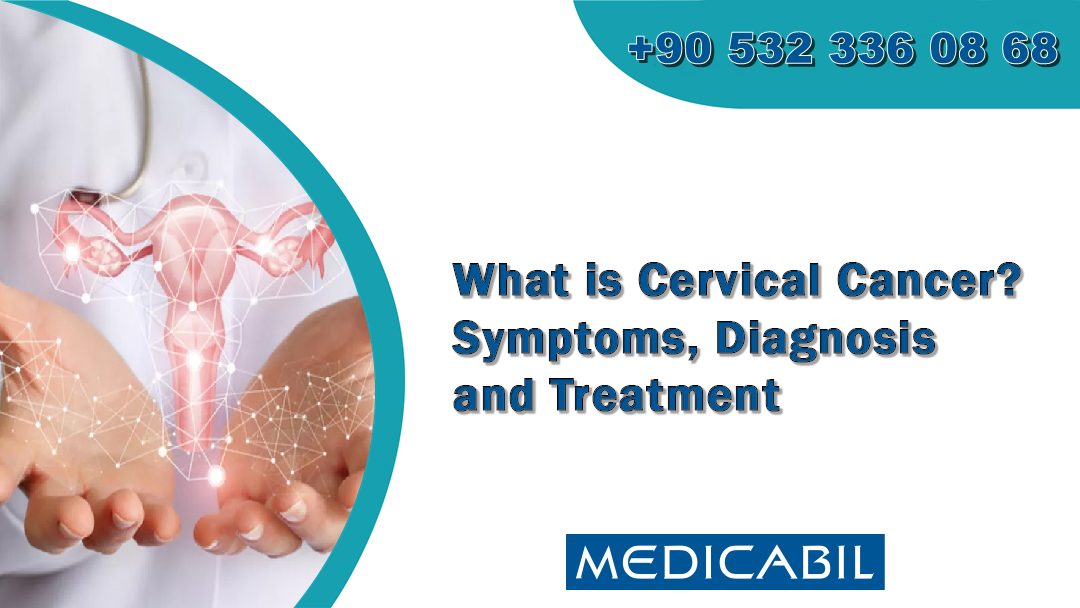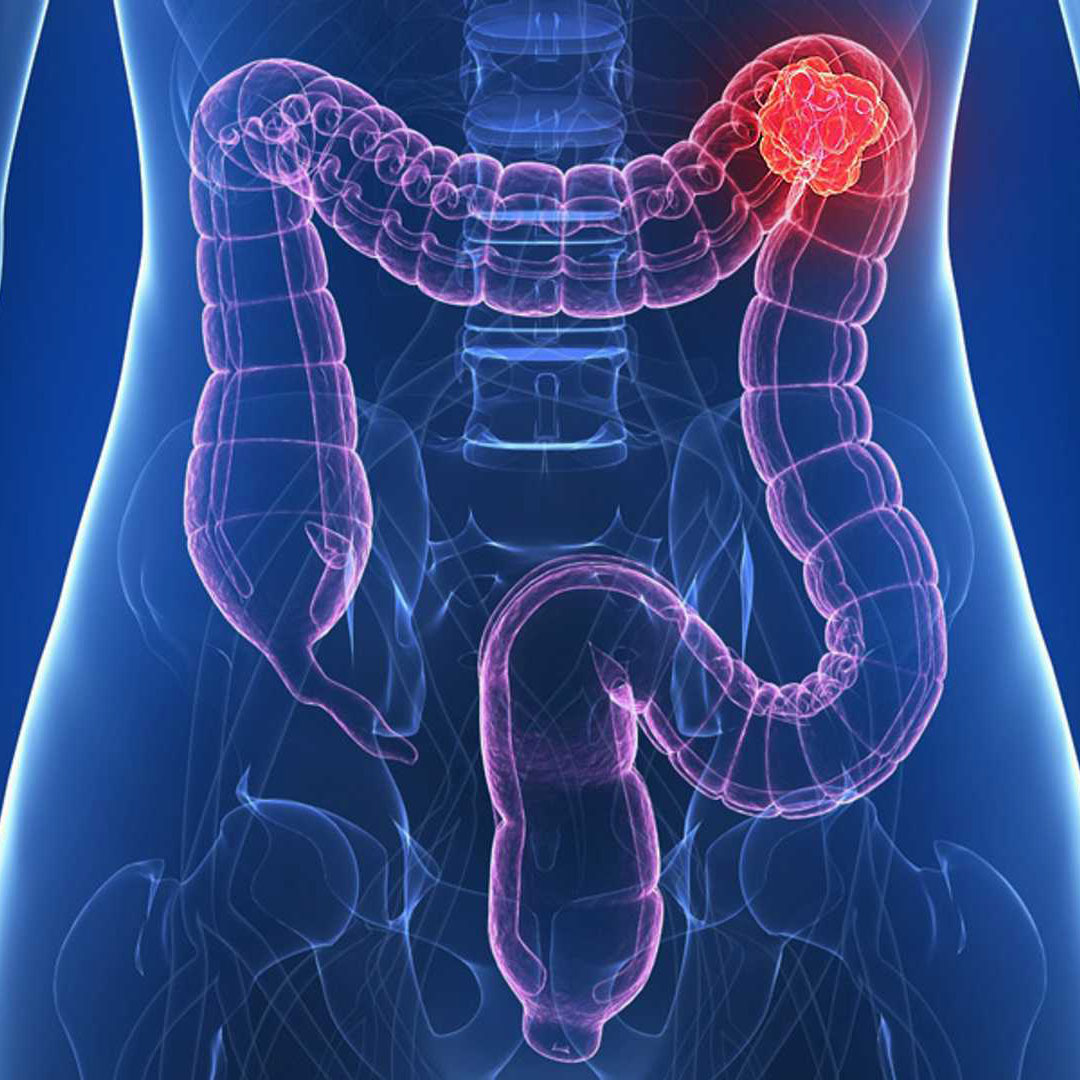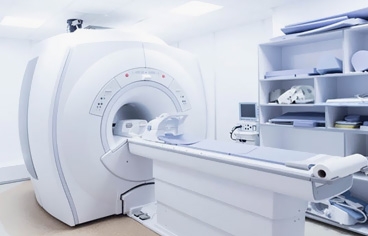What is Cervical Cancer? Symptoms, Diagnosis and Treatment
- Home
- What is Cervical Cancer? Symptoms, Diagnosis and Treatment

You can find all information about the symptoms, causes, prevention, diagnosis and treatment of cervical cancer in our article below.
Cervical Cancer Overview
Cervical cancer is a type of cancer that can occur in any part of the cervix.
The region that is meant to be described by the term cervix is the opening between the vagina and the uterus.
The cervix is part of the reproductive system and is sometimes called the cervix.
It is an infection by the human papillomavirus (HPV) strains that cause nearly all cervical cancers.
Cervical cancer is a disease that can be prevented by cervical screening before it turns into cancer.
Cervical cancer usually progresses very slowly. How important; It varies depending on its size, whether it has spread and your general health.
What are the Symptoms of Cervical Cancer?
Cervical Cancer symptoms include:
Unusual vaginal bleeding: This includes bleeding during or after sexual intercourse, bleeding between menstrual periods or after menopause or heavier than normal periods.
Changes in vaginal discharge.
Pain during sexual intercourse.
Pain in the lower back, between the hip bones (pelvis), or below the abdomen.
If you have fibroids or another disease such as endometriosis (chocolate cyst), you may experience similar symptoms regularly. You may find that you get used to these symptoms over time but if your symptoms change, get worse or start to feel unusual to you, it's important to get checked out by a doctor.
If you have symptoms of Cervical Cancer, be sure to see a doctor. It is important in the diagnosis and treatment of the disease to explain the symptoms to the physician clearly and without hesitation.
Having these symptoms does not necessarily mean that you have cervical cancer, but it is very important to have a doctor's control.
How is the Physician Examination in Cervical Cancer Screening?
Although the examination is different for each patient, the process in general proceeds as follows:
It can look outside the vagina (vulva).
He can control the inside of the vagina with 2 fingers while pressing on the abdomen. A smooth, tube-shaped instrument called a speculum that is inserted into the vagina can examine the cervix.
She may take a small sample of cells from the cervix using a soft brush.
This examination is not painful, but it may also cause a slight discomfort to the patient. In case of discomfort during the examination, the physician should be informed.
What are the Causes of Cervical Cancer?
The causative agent of Cervical Cancer is the human papillomavirus. (HPV) This virus is transmitted in the following ways:
Any sensual contact with the genital area.
Vaginal, anal or oral sex.
Sharing sexual health products with another person.
Who Can Have Cervical Cancer?
Every woman is at risk of developing cervical cancer. There is no possibility of Cervical Cancer in women whose uterus and cervix have been removed by total hysterectomy in which the uterus and cervix are removed. You may also be more likely to have cervical cancer if:
Women under the age of 45 (Cervical cancer is more common in younger people).
Those with a weakened immune system, such as HIV or AIDS.
Those who have more than one child or have children at an early age (under 17 years old).
Those whose mother used diethylstilbestrol (DES) during pregnancy.
Those who have had vaginal, vulval, kidney or bladder cancer in the past.
Cervical Cancer Risk
It is not possible to completely prevent Cervical Cancer. However, there are some things that can be done to reduce the risk of developing Cervical Cancer.
Cervical screening and HPV vaccination are the best ways to prevent Cervical Cancer.
All women aged 25-64 should have regular cervical screening. This scan helps find and treat any changes in the cells of the cervix before it turns into cancer.
All children aged 12-13 are offered the HPV vaccine. This vaccine helps protect against genital warts as well as all cancers caused by HPV.
Smoking can weaken your immune system, and also the chemicals in cigarettes can cause cervical cancer. Quitting smoking reduces the risk of developing cervical cancer.
Eating a balanced diet to help support the immune system reduces the risk of Cervical Cancer.
How Is Cervical Cancer Diagnosed?
The main test for Cervical Cancer is colposcopy. If there are abnormal cells in the cervix, this indicates the risk of Cervical Cancer. In such a case, a procedure called colposcopy is usually required to take a closer look at the cervix. As a result of colposcopy, it can be understood that the cells are benign or malignant. After receiving the results, the physician will determine the road map by making the necessary evaluation. In addition to colposcopy, the physician may also refer to biopsy.
Cervical Cancer Diagnosis
Additional tests will usually be needed after a diagnosis of Cervical Cancer has been made. In this way, the size of the cancer and how far it has spread (this is called the stage) can be determined.
You can get information from experts about the grading and staging of Cervical Cancer.
At this stage, the following tests may be requested from the patient:
Blood tests,
Computer Tomography (CT) scan,
MRI scan,
PET scan,
Chest X-ray.
Internal examination of the vagina and cervix (General anesthesia may be given during this examination).
Doctors will use the results of these tests and decide on the best treatment plan for the patient.
How Is Cervical Cancer Treated?
Cervical cancer is a treatable disease. The type of treatment depends on the following subjects:
The size and type of cancer,
The area where the cancer is located,
Whether it has spread to other organ sor not?
General health status of the patient.
Treatment is usually; will include surgery, chemotherapy, or radiotherapy. Also, treatment may include targeted drugs to treat cancer.
How is Cervical Cancer Surgery Performed?
The main treatment for cervical cancer is usually surgery, especially if the cancer is detected early. There are several types of surgery preferred to treat cervical cancer. The elements removed for cervical cancer in these surgeries are as follows:
Part of the cervix. (This is only possible if the cancer is very small)
The upper part of the cervix and vagina. (This surgery does not remove the uterus, so it is possible to become pregnant in the future)
The cervix and the entire uterus. (This surgery may also involve removing the ovaries and fallopian tubes)
Surgery to remove all or part of the cervix, uterus, ovaries, and fallopian tubes, as well as the bladder, bowel, vagina, or rectum, is performed when the cancer recurs and no other treatment is possible.
Surgery may also require removal of some lymph nodes that are part of the body's drainage system. The recovery period after these surgeries depends on the type of surgery.
How is Cervical Cancer Surgery Performed?
The main treatment for cervical cancer is usually surgery, especially if the cancer is detected early. There are several types of surgery preferred to treat cervical cancer. The elements removed for cervical cancer in these surgeries are as follows:
It's part of the cervix. (This is only possible if the cancer is very small)
The cervix and upper part of the vagina. (This surgery does not remove the uterus, so it is possible for you to become pregnant in the future)
The cervix and the entire uterus. (This surgery may also involve removing the ovaries and fallopian tubes)
Surgery to remove all or part of the cervix, uterus, ovaries, and fallopian tubes, as well as the bladder, bowel, vagina, or rectum, is performed when the cancer has recurred and no other treatment is possible.
Surgery may also require the removal of some lymph nodes that are part of the body's drainage system. Recovery time after these surgeries depends on the type of surgery.
Who is Radiotherapy Planned for?
Radiotherapy uses high-energy radiation beams to kill cancer cells. Radiotherapy may be preferred for cervical cancer in the following situations:
As the main treatment if the cancer is large or has spread.
After surgery, usually in conjunction with chemotherapy, to keep the cancer from returning.
To help improve symptoms such as bleeding.
For cervical cancer, radiotherapy can be given outside or inside the body (brachytherapy).
Treatment with Targeted Drugs (Smart Drug Therapy)
In advanced cervical cancers or cancer that has recurred, you can be treated with a targeted drug called a smart drug. The purpose of this drug is not to cure the cancer, but to help shrink the cancer or stop its growth.
If cervical cancer has advanced, it may be very difficult to treat or it may not be possible to cure the cancer. In this case, the goal of treatment is to limit the cancer and its symptoms and help prolong life.
In advanced cancer cases, the palliative care team dominates the treatment. The main purpose of palliative care is to eliminate the negative effects of cancer.
-
 What is Cybernix Therapy?
What is Cybernix Therapy?
-
 What is Endometriosis (Chocolate Cyst)? What are the symptoms? How to Treat?
What is Endometriosis (Chocolate Cyst)? What are the symptoms? How to Treat?
-
 Colon Cancer (Symptoms, Stages, Treatment)
Colon Cancer (Symptoms, Stages, Treatment)
-
 Influenza (Flu) in Children
Influenza (Flu) in Children
-
 Stomach Cancer Symptoms and Treatment Methods
Stomach Cancer Symptoms and Treatment Methods
-
 What is Lymph Node Swelling? What Are The Reasons?
What is Lymph Node Swelling? What Are The Reasons?
-
 When to Use Antibiotics? What are the side effects? What is Antibiotic Resistance?
When to Use Antibiotics? What are the side effects? What is Antibiotic Resistance?
-
 What is Muscle Spasm?
What is Muscle Spasm?
-
 What is MRI? How to Take an MRI with Medication? Is It Harmful?
What is MRI? How to Take an MRI with Medication? Is It Harmful?
-
 What are the Causes of Diarrhea and Vomiting? How to Treat?
What are the Causes of Diarrhea and Vomiting? How to Treat?
